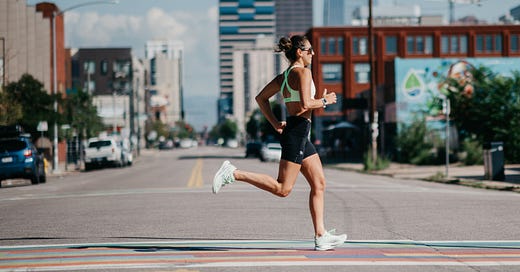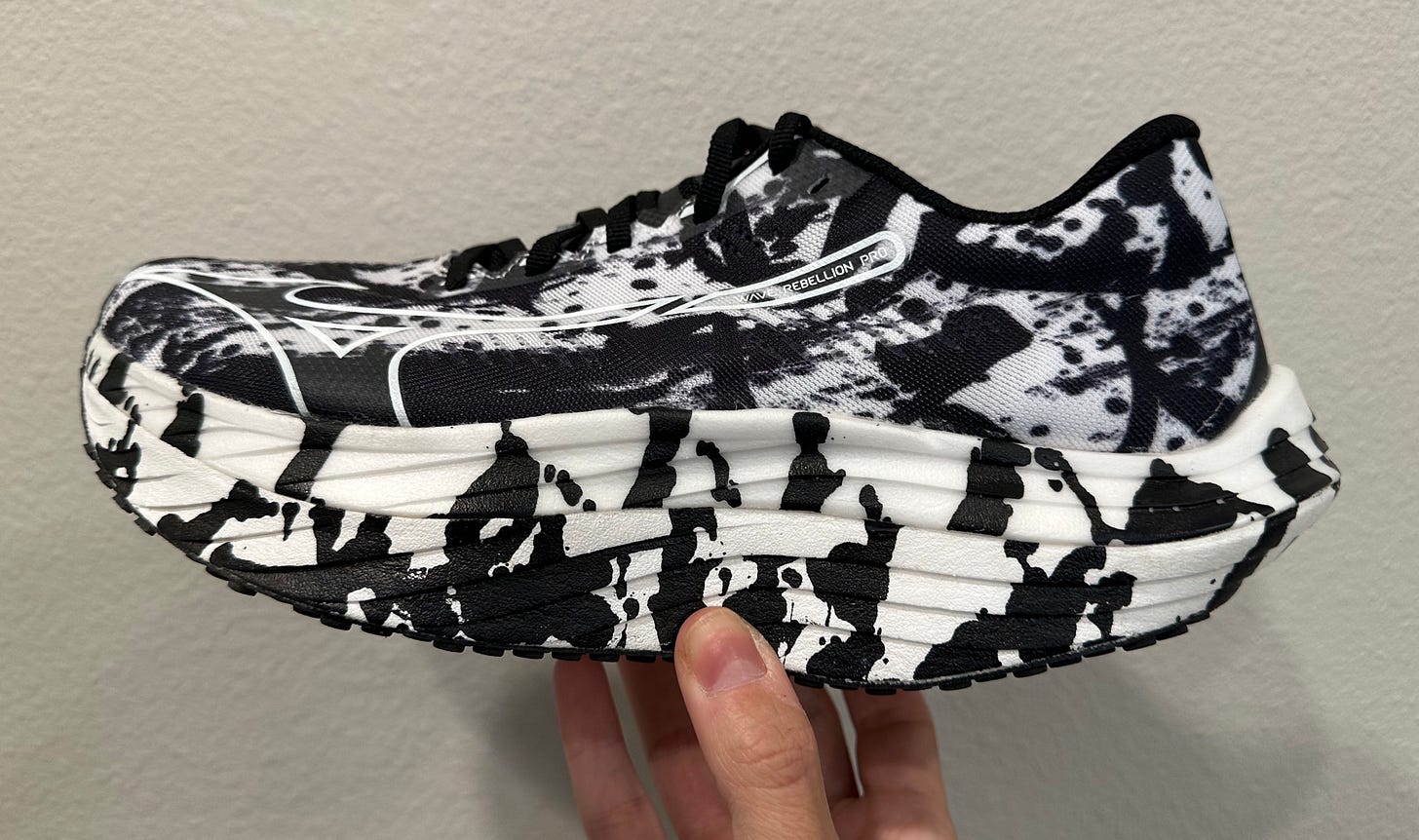Humans are hardwired to compare ourselves to other humans. Comparison is even more inevitable within the running world, which is almost entirely dictated by quantifiable metrics that make it incredibly easy to see how your performance stacks up to that of literally anyone else who shares their stats publicly.
Comparison can be a powerful motivator: When someone you follow on a social media platform runs an additional kilometer or an additional 10 minutes, you’re more likely to run an additional three-tenths of a kilometer or three minutes longer, a 2017 study published in the journal Nature found. Similarly, when a New York University psychologist analyzed the race results of local running clubs back in 2014, he found that people performed better when their rivals were racing versus when they were competing against random strangers; multiple rivals made them even faster. And people who exercised with someone they thought was better than them worked out up to 200 percent harder and longer than others, according to a 2012 study in the Annals of Behavioral Medicine.
But those benefits only work if you don’t let yourself get caught in the comparison trap. I scrolled across this Tweet earlier this week and it really resonated with me:
Too often, runners let their training be dictated by what the runners around them are doing, whether that’s in person or online. Maybe you run with a club, and the majority of runners do their easy runs at a pace that’s way too fast for you but you don’t want to be dropped. Maybe you see the weekly mileage your friends are sharing on Strava so you force yourself to run an extra day when you really could have used the rest. Or maybe you follow certain influencers on TikTok or Instagram and see them running again within a week of finishing a marathon, so you rush back into training too quickly.
There’s a quote that’s often used in the context of running: “Comparison is the thief of joy.” There’s no better way to suck the fun out of your running than comparing your performance against that of other runners—and that goes for pacing, weekly mileage, recovery time, etc. (That quote, BTW, comes from Teddy Roosevelt, who was a trail runner once upon a time.) What works for another runner may not work for you, and applying the whole “keeping up with the Joneses” to physical activity can actually be a recipe for burnout, overtraining, and even injury.
We live in an era of constant comparison, thanks to social media. But what you see on Strava or Instagram or TikTok is—literally—a snapshot of someone’s training. You can’t tell from a single image or video what their running background is, what other types of workouts they do, their recovery routine, their nutrition habits, what stressors they’re dealing with, and so on. All of those things (as well as a slew of other factors) will affect someone’s performance. But you don’t get that context from a social media caption.
Running is a very individual sport. Two people with similar fitness levels can do the same exercise and get completely different results, because, scientifically, we all respond differently to training. Equal effort doesn’t mean equal results: Performance is affected by your age, gender, size, genes, environment, and more. That means your running journey is yours alone.
When you start comparing yourself to others, you lose focus on yourself and your own running journey—which is really the only thing that matters when it comes to making progress. Instead of looking at your performance in the context of your training history, you start asking yourself things like Should I be pushing myself more? Am I not putting in the work that they are? What’s wrong with me? Research has shown that this kind of negative self-talk increases anxiety and serves as a detriment to overall performance.
Oversharing in the name of comparison also places undue pressure on your running. For example, people who shared health-related data on Instagram felt pressure to perform, which led to compulsive tendencies, according to a 2021 study published in the journal Social Media & Society. And people who use social media platforms for social recognition—as in, you log those extra miles or push the pace for Strava kudos or Instagram likes—as opposed to supporting other athletes, you’re more likely to experience higher stress levels and develop an obsessive exercise habits, a 2020 study published in the journal Information Technology & People found.
If you find yourself veering into the comparison trap, you need to re-ground yourself in the why of what you’re doing. Why are you running so fast? Why are you adding extra mileage? Why are you jumping back into running so quickly after a race? If the answer to any of those questions revolves around something someone else is doing rather than insights from your own training, that’s a red flag.
Just a reminder: No one else cares what you’re doing. And it’s up to you to set up healthy boundaries around how you show up in running groups or consume data from other runners. Do you normally run with people who refuse to slow down? Find a group that runs at a more casual pace. Are you triggered by other people sharing their workout data on social media? Opt out, or make your own workouts private (I found that when I stopped sharing my paces on Instagram, I also stopped paying attention to the paces other people were sharing.)
And remember: All that mental energy you’re wasting comparing your performance to that of another runner? That’s energy you could be putting back into your own training.
the rundown
Mizuno Wave Rebellion Pro
Just the look of this shoe got people talking, which was a nice change of pace for Mizuno. I wanted to love it; lots of reviewers did. But it just did not work for me, not on easy runs and not during speed workouts. I’m not really sure why, because it had a lot of features I like: an aggressive forefoot rocker; an exaggerated undercut heel; dual layers of foam (Mizuno Wave Enerzy Lite+ and Enerzy Lite) for bounce and responsiveness; a carbon-infused nylon plate. But this cushioning was so stiff that my leg muscles felt like they were overcompensating for the lack of give underfoot. FWIW, I’ve never felt this way in other maxed out shoes like the New Balance SuperComp Trainer or the Adidas Prime X—but no matter the pace, my gait felt awkward and unnatural. These are a pass from me, even if they are a work of art.
“The Comfort Crisis,” by Michael Easter
This isn’t a running book, but any endurance athlete could benefit from this deep dive into how we’ve become the weakest humans in history. Easter’s call to do hard things—whether that’s taking the stairs over an escalator or embedding yourself in the Alaskan backcountry for a month (or, more likely, somewhere in between)—is a reminder that getting comfortable with discomfort can benefit your physical and mental health. With tons of science behind tips like “immerse yourself in nature 20 minutes a day three times a week,” I actually felt inspired to incorporate his learnings into my life.
Get a Sneak Peek at the 2024 Olympic Marathon Course
Earlier this week, the International Olympic Committee shared the official Paris 2024 marathon course via a slightly nausea-inducing YouTube video (and a less immersive Twitter video). The route starts at the Hôtel de Ville in the 4th arrondissement, and winds past the Opera Garnier, Place Vendôme, and the Eiffel Tower, and the photo opps on this course are going to be epic. The best part: Normies can also run the marathon (or a 10K) later that day. Runner’s World has info on how to enter.
The Performance Training Journal
Jason Fitzgerald is one of my go-to sources for all things running, and he just released a new training journal. I’m old-school when it comes to planners and journals, in that I want a hard copy like this, not just some kind of digital log via Strava or Training Peaks. This is a no-frills notebook that allows you to track your progress over time so you can spot micro and macro patterns that may hurt or help your performance. The best part: Jason has coaching guidance on strength training, injury prevention, finding your community, and racing, as well as the best workouts for distance runners.








Comfort Crisis is soooo good.